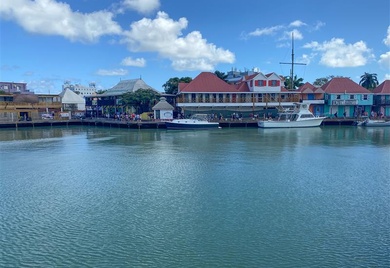Tourism development through PPPs: An opportunity to generate employment in Latin America and the Caribbean?

Tourism is one of the world’s largest industries, particularly in terms of employment. This industry generates one out of every 11 jobs in the world, represents 10% of gross domestic product (GDP) worldwide, and 7% of exports, according to the World Tourism Organization. International arrivals around the world grew from 25 million in 1950 to more than one billion in the last few years, a period during which arrivals in developing countries exceeded those in developed countries.
But what are the characteristics of employment in this industry? Why are coordinated public-private investments needed? How can we measure the impact of an investment in tourism on employment? Does investment in tourism always have positive effects on employment?
Tourism and employment
One of the main reasons why the developing countries are so interested in the tourism industry is its job creation potential. Expansion of the tourism industry generates direct, indirect, and induced jobs. Besides, it is a diverse and labor-intensive sector, and thus an effective generator of a wide range of job opportunities.
Tourism employs more women, young people, and people with limited education than most industries, promoting an environment of inclusion and empowerment for vulnerable groups. In addition, given its low barriers to entry, this industry provides investment opportunities for entrepreneurs to start small-scale businesses and hire workers.
The need for coordinated public-private investments
The economic benefits of tourism do not usually reach their optimum (social) level with isolated private sector investments alone. The geographic concentration — dependence on natural and/or cultural attractions — and goods and services complementarities characteristic of this industry highlight the importance of factors like economic agglomeration effects, spillover effects, and externalities. In this context, investment decisions are interrelated so the potential benefit of a specific investment depends on the complementarity of other investments. Thus, without adequate coordination among investors, the market fails to allocate resources optimally.
For example, hotel owners may under-invest in hotel capacity as their returns depend on the investment decisions made by restaurant owners and other investors in recreational and cultural activities. Similarly, public investment in infrastructure for transportation and tourism — such as roads, lighting, restoration of the historical and cultural heritage, among other investments — is limited by lack of coordination with the private sector, to generate an adequate flow of tourists.
A recent experience in Latin America and the Caribbean
Between 2003 and 2010, the government of the province of Salta implemented a series of interventions to generate a structural change in the tourism industry and create jobs after Argentina’s economic crisis in 2001. These investments required a high degree of coordination and collaborative frameworks to foster public-private partnerships (PPPs). The initiative was also supported by a loan from the Inter-American Development Bank (IDB) Group.
The Tourism Development Policy (PDT, by its Spanish acronym) was based on three pillars: i) construction and modernization of the transportation and tourism infrastructure; ii) tax incentives for the construction, expansion, and remodeling of hotels and other types of lodging; and iii) institutional strengthening of tourism entities and a comprehensive and sustained national and international advertising campaign.
How do we evaluate tourism’s impact on employment and what are our findings?
In a recent study conducted by the IDB Group, we evaluated the impact of the PDT on employment using a methodology known as the Synthetic Control Method. Specifically, we used a weighted combination of other Argentine provinces to construct a ‘synthetic leap’ that reproduces what would have happened with employment in the absence of the policy. What were our main findings?
- The PDT created 1,376 new jobs in the tourism value chain of Salta province between 2003 and 2013. Fifty percent of this growth was led by the hotels and lodging sector.
- The PDT did not displace employment in other industries. On the contrary, it produced spillover effects and positive externalities in employment. For every job created in the tourism value chain, a new job was created in the rest of the economy. This means a total of 3,750 new jobs in Salta’s economy.
So, does every investment in tourism have a strong positive impact on tourism?
Not necessarily. Although an increase in tourism services supply and demand may benefit other industries, both through direct and indirect spending and multiplier effects, it may also produce displacement (crowding-out) effects. These latter are negative effects that may occur in other sectors, due to restrictions on the supply of labor, capital, or land.
The effect in employment may be negative if the increased demand in labor generates higher salaries and captures employees from other sectors; this means, if employment in tourism grows at the expense of a reduced employment in other industries. This did not happen in the case of Salta, due to regulation of the minimum salary in all industries, and the high level of unemployment, characteristic of the province during that period.
Similarly, no negative effects were anticipated due to pressure on other supplies prices (cost of capital and land) or reduced competitiveness in export or import markets through appreciation in the exchange rate. This was possible in the case of Salta given its industries’ low capital intensity, significant amounts of available land, and limited influence on the exchange rate, added to the devaluation context affecting Argentina at the time.
Due to Salta’s characteristics and specific context, and the comprehensive public-private approach of the PDT, the positive multiplier effects of investments in tourism offset the negative effects; moreover, resulted a significant increase in total employment, above and beyond the tourism industry itself.
LIKE WHAT YOU JUST READ?
Subscribe to our mailing list to stay informed on the latest IDB Invest news, blog posts, upcoming events, and to learn more about specific areas of interest.
Subscribe



